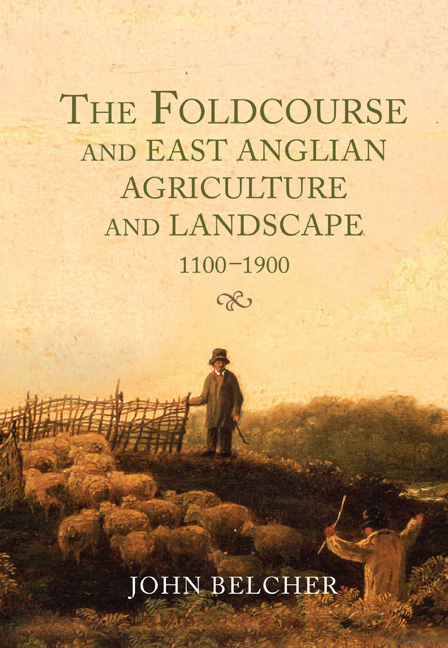Book contents
- Frontmatter
- Contents
- List of Illustrations
- Acknowledgements
- List of Abbreviations
- Introduction
- Chapter 1 The Contexts of the Foldcourse
- Chapter 2 Manors, Rights and Customs of the Foldcourse
- Chapter 3 The Medieval Foldcourse
- Chapter 4 The Late Medieval Evolution of Foldcourse Husbandry
- Chapter 5 The Agricultural Practice of Foldcourse Husbandry
- Chapter 6 The Foldcourse and Improvement
- Conclusions
- Glossary
- Bibliography
- Index
- Garden and Landscape History
Chapter 2 - Manors, Rights and Customs of the Foldcourse
Published online by Cambridge University Press: 26 March 2021
- Frontmatter
- Contents
- List of Illustrations
- Acknowledgements
- List of Abbreviations
- Introduction
- Chapter 1 The Contexts of the Foldcourse
- Chapter 2 Manors, Rights and Customs of the Foldcourse
- Chapter 3 The Medieval Foldcourse
- Chapter 4 The Late Medieval Evolution of Foldcourse Husbandry
- Chapter 5 The Agricultural Practice of Foldcourse Husbandry
- Chapter 6 The Foldcourse and Improvement
- Conclusions
- Glossary
- Bibliography
- Index
- Garden and Landscape History
Summary
The foldcourse was a manorial right and this chapter will examine a number of aspects of the interaction of manor and foldcourse that, while not necessarily unique to the foldcourse, when taken together distinguish it from other agrarian systems. The foldcourse was one element, together with manorial and tenurial rights and agrarian activities, in a complex web, a web in which it is difficult to separate many of the individual agents one from another. A number of agrarian issues (such as shifts and extended fallowing) referred to here will thus be discussed in greater detail in subsequent chapters. This chapter begins with a discussion of the manor specifically and addresses why, in multi-manorial townships, the right to a foldcourse was held by only some manors; the location of the foldcourses; and, in the case of multi-manorial vills, the topography of the individual foldcourses. Subsequent discussion focuses on the interaction of the manorial foldcourse with tenurial customs and rights.
MANORS AND THE FOLDCOURSE
Manorial organisation in Norfolk during the medieval period has been described as “particularly complex”, and is characteristic indeed of the wider Danelaw, with “its complex estate structure” and “fragmented tenurial arrangements”. Rights of lordship in East Anglia were “miscellaneous and loosely organised”: manor and vill were not coterminus, each vill typically had four or five manors; and manors often had lands in several vills. This lack of coincidence between manor and vill was not, however, confined to East Anglia, for “the ‘typical’ coincidence of manor and vill was … not typical at all”, even in the Midlands.
The pre-conquest manors of eastern England commonly consisted of a central estate to which “light rents were paid and occasional services were rendered” by large numbers of almost independent tenants (discussed in Chapter 3) who were dispersed over a wide area. These manors, with their loose overall control and often scattered holdings, are perhaps better viewed not as demesne and tenantry owing extensive services, but as “administrative units created for the exploitation of the land”. Eastern England, in 1066, was characterised as an “un-manorialised country”, albeit one moving towards greater lordly authority – a development that particularly affected Cambridgeshire.
- Type
- Chapter
- Information
- Publisher: Boydell & BrewerPrint publication year: 2020



